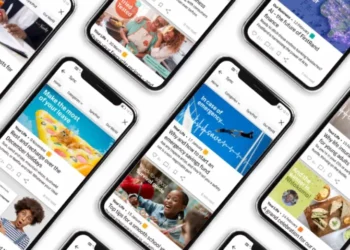Email is the preferred means of communication. Consumers, journalists and editors are bombarded by hundreds of messages a day, some wanted, others not so much. But if you want people to take note of what you have to say, how do marketers and PRs ensure recipients even bother to open the message in the first place? Warren Moss gives his opinion.
1. Prioritise your content: Use the 1/3 rule: divide your email space horizontally into thirds and put your most important content in the top two thirds of your email. The top and middle third of your email is the most valuable because it is what the recipient sees first in preview mode and when they open the email.
2. Text to image ratio: The text to image ratio is the amount of plain text you include in your email design, compared with how many images you include. Generally, the ratio we recommend is 60:40 (text to image). A higher text ratio results in a lower spam rating score, which means a better chance for your email to land in the recipient’s inbox, right where you want it to be, as opposed to the junk mail box being blocked by the Internet Service Provider. This is one of the significant differences when designing for email vs. designing for print or web.
3. Spam words: It would seem an obvious conclusion to say do not include spam words in your email. But most people only have a vague idea of what these spam words might be. Believe it or not, words like ‘hidden’, ‘diet’, ‘insurance’, ‘free’ or ‘competition’ and many more can add up to a high spam rating when combined with other elements. The trick is to eliminate as many of these potential words and phrases as possible.
4. Branding: Your email should clearly place your brand in the recipients mind. There should be overt (such as obvious logos) and covert (such as brand colours and special fonts) branding associations throughout your email, through the use of your logo, fonts, colours and a clear brand tone in copywriting.
5. Subject line theory: There are obvious rules when creating an email subject line, such as not exceeding 50 characters and limiting punctuation and capital letters. But sadly it is not that simple. Recipients are becoming more informed and trickier to please.
The best rule so far is the C.U.R.V.E rule.
· Curiosity – Spark a recipient’s curiosity or encourage them to read further by asking a question.
· Urgency – Urgency is extremely powerful when combined with relevancy or value because it creates an immediate response before the dreaded drop-off.
· Relevance – Relevance is the most important element of a subject line. Writing an appropriate subject line that the recipient can relate to will increase open rates.
· Value – Sell the benefits of the product or service and motivate why a recipient should open the email because creating a sense of curiosity and urgency won’t work if no benefit is offered in return.
· Emotion – Emotion is the element that ties all of the other elements together and should tie into the brand tone of your company. Find a genuine emotional connection between the content and the audience. Tap into it and use it wisely.
A good subject line should include at least two out of these five rules.













